 |
| Golden ratio proportions of the teeth/lips and nose in relation to the distance from the pupils to the bottom of the chin |
Does the human face reflect golden ratios in its proportions?
Not everyone will agree, but there is much evidence to demonstrate that the answer is "Yes." There's some truth to the adages "beauty is in the eye of the beholder" and "beauty is only skin deep," yet there is no denying that there's almost universal agreement when asked to distinguish between a very attractive face and a very unattractive face. Let's acknowledge that every human face has many unique measurements and proportions. As a result no single measure can be said to apply to every aspect of every face. The real question is whether the golden ratio represents an average or ideal in human facial dimensions. The even more interesting question is whether golden ratios in facial features impact our perceptions of attractiveness and beauty. Debunkers will point out the variations, and perhaps suggest that those who find golden ratios in a beautiful face did so because they were looking for them. Consider the following studies though, which demonstrate that the connection to beauty is based on much more than looking for data to fit the desired result:
- Dr. Stephen Marquardt, a maxillofacial surgeon and recognized expert on beauty, studied hundreds of faces in his studies on attractiveness to develop his patented "beauty mask." The mask identifies archetypes for the faces perceived as most beautiful. The mask is based on dodecagons, which are based on golden ratios. Below is an example of a face that has been morphed to fit the beauty mask. Make your own assessment and see the YouTube video of the step-by-step transformation.
- In 2009, a university study identified ideal facial proportions, as selected by study participants who chose the most attractive face from a series of photos. The researchers were not looking for the golden ratio. To the contrary, they concluded that it didn't exist and announced their own two "new golden ratios" of attractiveness. My subsequent analysis, however, shows that their ideal facial features reveal a dozen golden ratios, in both horizontal and vertical dimensions of key facial markers. See image and details further below in this article.
- In 2012, a UK cosmetic company ran a competition to find Britain's most perfect face. The winner was selected from 8,000 contestants. Her face shows almost two dozen golden ratios in both the horizontal and vertical dimensions of key facial markers, as shown in an accompanying YouTube video to the article.
Does the design of the Parthenon reflect the golden ratio?
Yes, but only in part, and not in the way you often hear. The front facade of the Parthenon is often shown with a golden rectangle framing it to illustrate its golden ratio proportions. Unfortunately, a precise golden rectangle would need to start at the second of four steps approaching the Parthenon, rather than the base of its columns. The golden rectangle would then end at the peak of the Parthenon, a point which has to be estimated because the structure is in ruins. Even as a golden ratio enthusiast, this is rather arbitrary and unconvincing as evidence. It's close to a golden rectangle, but not close enough to conclude that it was used in its design. That, however, is not the end of the story. The top structure across the columns has dimensions that appear to be very close to the golden ratio. More interesting yet, the fourteen rectangles across the horizontal beam each appear to be divided exactly at their golden ratio point, as closely as can be determined from photos. These golden ratios may or may not have been included intentionally among all the other numbers and ratios represented in the Parthenon. The golden ratio was written of by Euclid almost 100 years before its construction though, so the architects of the Parthenon certainly could have been aware of it. The Parthenon has a complex design that embodies many numbers and mathematical relationships. It's not unreasonable at all that the golden ratio would have been among those represented.
Is the spiral of the Nautilus shell based on the golden ratio?
It can, but not in the way you often hear. The traditional "golden spiral" is constructed from a series of adjacent golden rectangles. This creates a spiral that increases in dimension by the golden ratio with every 90 degree turn of the spiral. The spiral of the Nautilus shell does not match this golden spiral, which is a source of the confusion on this question. There is, however, more than one way to create a spiral with golden ratio proportions. As one example, you can create a spiral that expands by the golden ratio with every 180 degree turn of the spiral. This spiral is a closer match for the spirals of many Nautilus shells, especially in the first several rotations of the spiral. An even closer match yet is found when when measuring to spirals on opposite sides of the center point.
Did Renaissance artists (Botticelli, Da Vinci, Michelango) use the golden ratio in composition of their paintings?
Yes. This is often contested by debunkers as being completely unsupported. One frequently referenced article by a Ph.D. in mathematics points out that there is no mention of the golden ratio in two biographies written about da Vinci. Wouldn't it be better to actually measure the paintings than to read a biography? Another debunker, also with a Ph.D. in mathematics, claims there is "no evidence" that da Vinci used the golden ratio, but in his presentation shows only da Vinci's simple sketches rather than his masterpiece paintings on religious subjects. Unfortunately, most commentary on da Vinci's use of the golden ratio in his paintings is based on The Mona Lisa, which has very few linear composition elements from which to definitively measure a golden ratio. Golden ratios are really quite easy to see if you have the right tools. Da Vinci's "Last Supper", "The Annunciation" and Salvator Mundi are much better examples and show clear composition lines at golden ratio points. Botticelli's "Birth of Venus" was painted on a canvas which is itself a golden rectangle, and key elements of the painting are at golden ratio points of the painting's height and width. Botticelli also created several renditions of "The Annunciation" which also have clear golden ratios in their composition. Michelangelo's "Creation of Adam" has God finger touching Adam's finger at the precise golden ratio point of the width of the area in which they are framed. That is just one example of how Michelangelo used this Divine proportion in the Sistine Chapel. Raphael's "The School of Athens" features a golden rectangle placed front and center in the foreground of the painting, and the main scene above reveals many golden ratios in its composition. As noted by "Civilisation" author Kenneth Clark, "This union of art and mathematics is far from our own way of thinking, but it was fundamental to the Renaissance."
Are the spirals seen in nature based on the golden ratio?
Some are, but most are not. The spirals most commonly seen in nature are equi-angular (aka logarithmic) spirals. This simply means that the spiral expands at a constant rate. This occurs because it creates an even flow of energy or distribution of tension. This has nothing at all to do with the golden ratio. Accordingly, all the illustrations of spiral arms of galaxies, curves of ocean waves, spiraling hurricanes, etc. that are incorrectly identified as a "Golden Ratio" or "Golden Spiral" should be relabeled or removed to avoid further confusion in perpetuating this golden ratio myth. There is another type of spiral that is related to the golden ratio, however, that occurs very commonly in nature. The spirals that appear in pine cones, pineapples, seed pods and similar plant structures are usually based on two successive numbers of the Fibonacci sequence. For example, if there are eight spirals in a clockwise direction, you will find thirteen spirals going in the counter-clockwise direction. Neither of these spirals is necessarily a "golden ratio" spiral on its own, but the ratio of these successive Fibonacci numbers approximates the golden ratio.
Did French painter Georges Seurat use the golden ratio in the composition of his paintings?
Yes. One art critic claimed that Georges Seurat "attacked every canvas with the golden section." At least one debunker says this is a simply "myth that needs to be dispelled." The truth is somewhere in the middle. My examination of over 100 Seurat paintings reveals that over 30 of them show very clear golden ratio composition lines. This analysis was based solely on the height and width of the canvas, where there is no room for interpretation or error. Seurat chose to paint about one-quarter of his work on golden rectangle panels. Of his 103 paintings listed at Wikimedia, at least two dozen of them had a height to width ratio to within 0.1? of the golden ratio. Other paintings show golden ratio between elements within the composition. So the correct answer is that Seurat frequently used the golden ratio in his artistic compositions, but probably did not attack every canvas with it.
Is the Great Pyramid of Giza based on a golden ratio?
Possibly, but unknown. This is also subject to debate and interpretation, and there is no certain answer. There is no mention of the golden ratio in the existing historical record of the Egyptians. The outer limestone skin of pyramid is now missing, which makes its exact original dimensions subject to some estimation. The outer skin is still intact at the top though, and thus provides good guidance as to the original form. What we do know is this: The estimated original dimensions of the Great Pyramid per Wikipedia reveal a pyramid with an average base measure of 230.4 meters and height of 146.5 meters. This height is different from a phi-based triangle by only 0.0367 meters, a variance of only 0.025%. There's another school of thought that the Pyramid's proportions are based on the arc of a circle whose circumference is equal to the perimeter of the base of the pyramid. If that's true, then the estimated height is different by only 0.177 meters), a variance of 0.1%. Other geometries are also possible, one based on surface areas and another on gradients using Egyptian units of measure. There is also evidence that the relative sizes and positions of the pyramids at the Giza site embody golden ratio proportions. The truth is that there is much that we do not know about these pyramids or their construction, so the dimensions could be based on any of these methods and geometries. The Great Pyramid was clearly constructed with some specific geometry in mind, and with exacting precision, so we can reasonably assume that its architects did not create a pyramid with these very special and unique geometries by blind chance. A very interesting question still remains: Even if the pyramid wasn't consciously designed with a knowledge of phi, why did they pick a geometry for the Great Pyramid that so closely embodies the golden ratio, the one number that has a ubiquitous presence in geometry, and that is associated with nature and beauty?
Is there a "new golden ratio" that can determine facial Human face - new golden ratio and actual beauty proportions attractiveness with two measurements?
No. The 2009 study claimed to have debunked the relationship of the golden ratio to beauty and claimed to have discovered two "new golden ratio" measurements that defined attractiveness. The faces identified as the most attractive, however, had over a dozen golden ratios in the dimensions of their key facial features. The researchers apparently didn't realize these golden ratios existed and devised their own alternative measurement points. It should be obvious that human facial beauty cannot be reduced to a single vertical and single horizontal measurement, and it's quite easy to prove this with a few simple examples of unattractive faces that still happen to fit those two measurements.
Is Mecca at the golden ratio point of the Earth?
No, at least not exactly. There are two golden ratio points in latitude between the Earth's poles, one in each hemisphere. Mecca is approximately 12 miles from the golden ratio latitude in the northern hemisphere. The golden ratio of the longitude is not easy to determine as there is no natural reference point like a rotational pole. The claim for Mecca was based on a Mercator projection of the Earth, which spans from dividing point between the US and Russia. Using this as the basis, Mecca is 938 kilometers from the golden ratio point of the longitude. Using other starting points as a basis there are many other golden ratio longitude points on the Earth.
Is the design of the UN's Headquarters building based on the golden ratio?
Yes. This was supposedly "debunked" in an an article by Dr. George Markowsky, a Harvard Ph.D. in Mathematics, who calculated the simple ratio of the building's height to width. He noted that the ratio was 1.76 and not 1.618, came to his conclusion, and missed many historical and mathematical facts. One of the lead architects, Le Corbusier, created a design system based on the golden ratio just years before his involvement with the UN project. A well-known, award-winning Disney education film illustrates that the golden ratio relationship is based on three horizontal golden rectangles stacked vertically, not its height vs. width. Golden ratios appear in the visual dividing points on the face of the building, and these are easily can be measured and calculated. Other very clear golden ratios are present in the dimensions of the curtain wall, windows and front entrance.
Is the golden ratio unique and special, or a myth to be debunked?
It quite definitely a special number with unique properties and it is found in nature, in some quite unexpected places. Even those whose goal is to debunk golden ratio myth will agree that the golden ratio has properties that make it very unique in mathematics and geometry. This one number has intrigued and inspired countless people throughout mankind's history, and earned a special place in their hearts and minds. It is probably for that very reason that some people have taken it beyond fact to fantasy and mysticism. That, in turn, has led others to summarily dismiss it with just as much zeal. Both extremes in position are flawed and keep us from knowing the truth and applying it.
Is the golden ratio a universal constant of design in nature? No. Must all features of a face be in perfect golden ratio proportion to be beautiful? No. Can it help us to better understand and appreciate beauty in nature, and apply it in our own lives? Yes.
Is the golden ratio required to create great art? No. Can it help to better appreciate some great art and to create with better composition and design? Yes. It's used for that purpose in art, photo cropping and composition, logo design, product design and other areas of design.
Like many things in life, it provides us with insight into the nature of things, the opportunity to better appreciate them, and the ability to use them to advantage. With all the misinformation and misconceptions that exist, it is best to keep an open mind, and not accept claims made without investigating evidence on both sides, experimenting on your own and coming to your own conclusions.
By Gary Meisner
Source: GoldenNumber.net
native gold
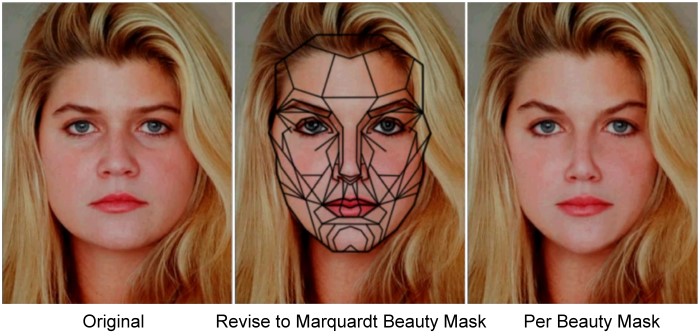
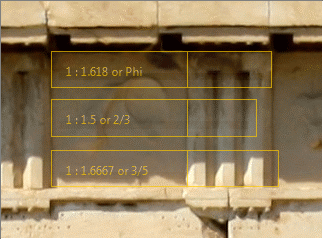
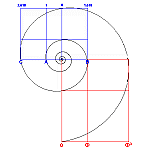
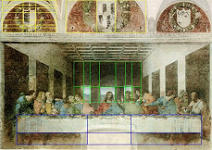

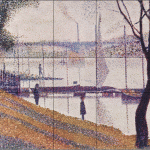
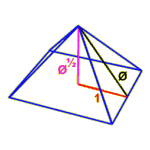
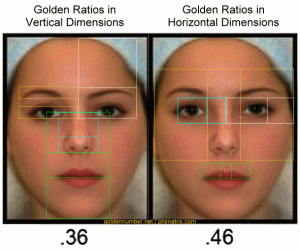
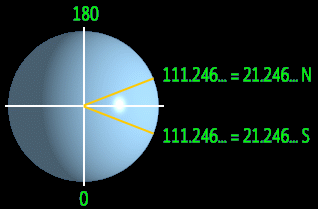
No comments:
Post a Comment
I thank for the comment!